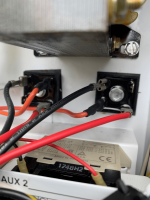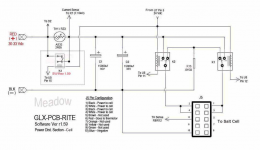- May 3, 2007
- 18,073
- Pool Size
- 20000
- Surface
- Plaster
- Chlorine
- Salt Water Generator
- SWG Type
- Hayward Aqua Rite (T-15)
One other thing I just thought of is that K1 controls the power from the yellow leads to the orange leads so if you are not forcing the K1 relay on (i.e. turn on the SWG), there will be no voltage on the orange leads.
You could just do continuity checks on the rectifiers to determine if they are ok.
One more check, with the SWG cord removed Black and Red wires off board, what is the resistance between the top two pins (L & R) of the white SWG cord socket.
You could just do continuity checks on the rectifiers to determine if they are ok.
One more check, with the SWG cord removed Black and Red wires off board, what is the resistance between the top two pins (L & R) of the white SWG cord socket.
Last edited:





